Exhibition of drawings and watercolors by Ernst Ludwig Kirchner opens at Galerie St. Etienne
Ernst Ludwig Kirchner, Dodo with Japanese Umbrella, 1909. Lithograph in five colors on heavy off-white wove paper. Signed, lower right, and inscribed "Handdruck" (hand-print), lower left. 15" x 12 3/4" (38.1 x 32.4 cm). One of six known impressions (the only impression in these colors); hand-printed by the artist. Gercken 387/a. Private collection. © Galerie St. Etienne
NEW YORK, NY.- Galerie St. Etienne presents Ernst Ludwig Kirchner: Watercolors and Drawings from the Robert Lehman Collection, an exhibition including 30 never-before-seen sketches by the great German Expressionist, from March 29 through July 1, 2016. Until recently, Lehman’s Kirchner drawings had been on extended loan to The Metropolitan Museum of Art in New York City. The late collector purchased the works in 1959 as a group from a German dealer who obtained them from the artist’s estate.
The exhibition explores the relationship between Kirchner’s sketches and his other work, presenting more than 50 pieces that span nearly his entire career, from 1906 through his Swiss exile in the 1930s. Also on view will be a selection of larger Kirchner drawings and a number of rare woodcuts, lithographs and etchings. Because Kirchner insisted on doing his own printing, most of his editions are extremely small, and some of the exhibited prints are unique or virtually unique.
Ernst Ludwig Kirchner, Still-Life, 1907. Woodcut in three colors on heavy tan wove card stock. Signed, lower right. 8" x 6 5/8" (20.3 x 16.8 cm). One of approximately 30 impressions published in Die Brücke's third annual portfolio (1908); hand-printed by the artist. Gercken 180/B. © Galerie St. Etienne
Ernst Ludwig Kirchner: Watercolors and Drawings from the Robert Lehman Collection represents a rare opportunity to trace the development of Kirchner’s oeuvre. Sketching was central to the artist’s creative process. Rejecting academic life drawing practices, Kirchner sketched in quick 15-minute intervals. His goal was to capture what he called the “ecstasy of first sight,” the immediate emotions evoked by the experience. These unmediated sketches revealed what he was observing as well as the artist’s temperament. He thought of his sketches as a visual language more evocative than words, referring to them as “hieroglyphs.” The sketches were never studies per se, but rather initial steps toward perfecting expressive form. Emotional emphasis frequently overrode realistic proportions.
The works on view reveal Kirchner’s range, influences, interests, and the progression of his draughtsmanship. The earliest work in the exhibition is a rare colored pencil sketch dating to 1906, done shortly after the founding of the Die Brücke (The Bridge) group in Dresden. The latest was done in Davos, Switzerland, during the artist’s exile from Nazi Germany, approximately two years before his suicide in 1938.
Ernst Ludwig Kirchner, Girl in Costume with Folded Arms, 1909. Pen and ink and colored pencil on thin cream wove paper. 8 5/8" x 5 3/8" (21.9 x 13.7 cm). Formerly collection Robert Lehman. © Galerie St. Etienne
Man and Woman at Café Table (1906; from the Lehman collection), the earliest work in the exhibition, reveals the influence of Vincent van Gogh on the Brücke artists during their formative years. The entire surface of the drawing is covered with brilliant fields of graded color. The van Gogh influence continued through 1908, after which Kirchner began to forge a more personal style.
Ernst Ludwig Kirchner, Man and Woman at Café Table (Dresden), 1906. Crayon and graphite on heavy cream wove card stock. 3 5/8" x 5" (9.2 x 12.7 cm). Formerly collection Robert Lehman. © Galerie St. Etienne
Dodo with Japanese Umbrella (1909; private collection) depicts Kirchner’s Dresden girlfriend, Doris (“Dodo”) Grosse. Kirchner’s search for “definitive forms” led him into printmaking. He believed that the process allowed a consolidation of “individual stages into a single result, achieving the ultimate in expression.” Unique in its color combination, this lithograph is one of six known impressions.
Ernst Ludwig Kirchner, Dodo with Japanese Umbrella, 1909. Lithograph in five colors on heavy off-white wove paper. Signed, lower right, and inscribed "Handdruck" (hand-print), lower left. 15" x 12 3/4" (38.1 x 32.4 cm). One of six known impressions (the only impression in these colors); hand-printed by the artist. Gercken 387/a. Private collection. © Galerie St. Etienne
Gentleman with Lap-Dog in Café (1911; private collection). Woodcut was Kirchner’s favorite printmaking medium because of its simultaneous kinship to non-Western tribal carving and to the German tradition of Dürer. The artist was intimately involved with each of his prints. “Only an artist who brings love and skill to the craft should make graphics,” he opined. “Only if the artist pulls the prints personally does the work deserve to be called original.” This is the only known impression of this woodcut.
Ernst Ludwig Kirchner, Gentleman with Lap-Dog at the Café, 1911. Woodcut in two colors on textured heavy cream wove paper. Signed, upper right. Stamped "Unverkäuflich/E.L. Kirchner" (not for sale/ E.L. Kirchner) and with estate stamp and registration number, "H157," verso. 7 1/8" x 9 1/4" (18.1 x 23.5 cm). The only known impression; hand-printed by the artist. Gercken 441. Private collection. © Galerie St. Etienne
Bust of a Nude Girl with Arms Outstretched (1910; from the Lehman collection) represents Kirchner’s Brücke-period style at its peak and is an excellent example of Kirchner’s drawing technique. The forms are rendered with bold, unbroken lines and strong contours, all the while showing his model at ease. “Sometimes,” Kirchner explained, “the great secret that lies beneath all the happenings and things in our environment becomes fleetingly perceptible…. We can never express it concretely, but only give it symbolic form.”
Ernst Ludwig Kirchner, Bust of a Nude Girl with Arms Outstretched, 1910. Pen and ink on thin cream wove paper. 5 1/2" x 8" (14 x 20.3 cm). Formerly collection Robert Lehman. © Galerie St. Etienne
Two Dancers (1927; from the Lehman collection) exemplifies Kirchner’s fascination with dancers. He frequented cabarets, vaudeville acts and dance halls with his sketchbook to explore form and movement. In this study, the dancers’ limbs twist in frenzy as motion is rendered with a series of swift strokes.
Ernst Ludwig Kirchner, Two Dancers, 1927. Pen and ink, watercolor and graphite on thin cream wove paper. 8 3/8" x 6 1/4" (21.3 x 15.9 cm). Formerly collection Robert Lehman. © Galerie St. Etienne
In a recent interview, Andrew Robison, Senior Curator of Prints and Drawings at the National Gallery of Art in Washington, D.C., noted, “Kirchner’s reputation should be like Picasso’s, because Kirchner, in many ways, in the first part of the 20th century parallels Picasso in being the dominant artist for his country.”
Ernst Ludwig Kirchner, Sertig Valley, Davos, Circa 1936. Crayon and graphite on thin off-white wove paper. 6 1/4" x 5 1/8" (15.9 x 13 cm). Formerly collection Robert Lehman. © Galerie St. Etienne

/https%3A%2F%2Fprofilepics.canalblog.com%2Fprofilepics%2F1%2F0%2F100183.jpg)
/https%3A%2F%2Fstorage.canalblog.com%2F03%2F02%2F119589%2F96711876_o.jpg)
/https%3A%2F%2Fstorage.canalblog.com%2F11%2F31%2F119589%2F94773502_o.jpg)
/https%3A%2F%2Fstorage.canalblog.com%2F20%2F83%2F119589%2F94772815_o.jpg)
/https%3A%2F%2Fstorage.canalblog.com%2F26%2F72%2F119589%2F75604929_o.jpg)
/https%3A%2F%2Fstorage.canalblog.com%2F59%2F60%2F119589%2F26458628_o.jpg)
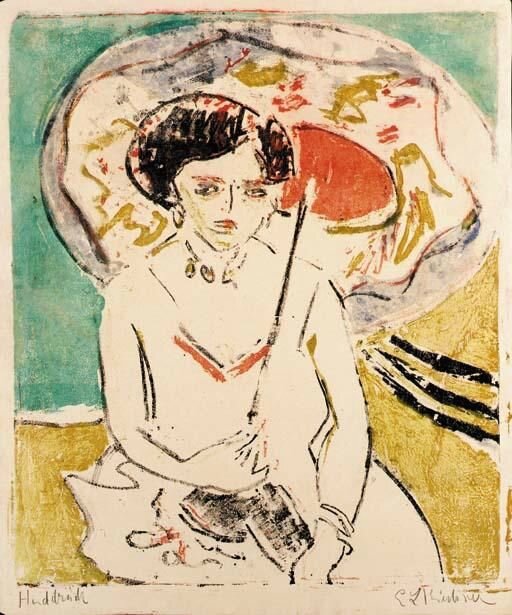
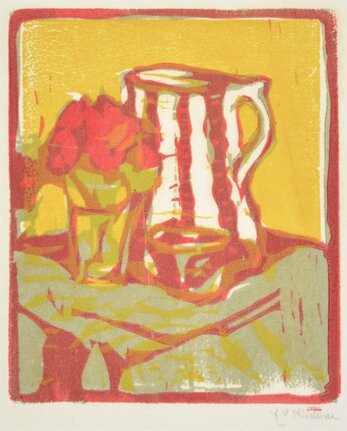
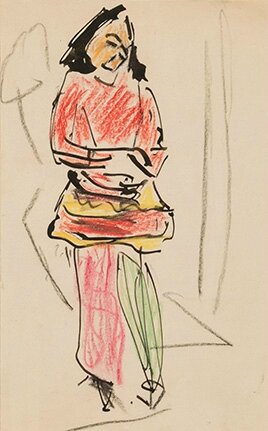
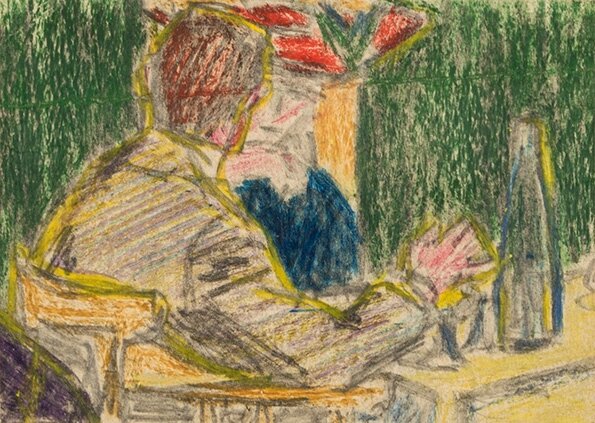


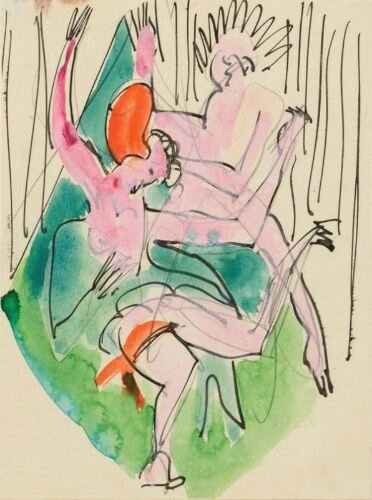



/http%3A%2F%2Fstorage.canalblog.com%2F47%2F16%2F119589%2F113083395_o.jpg)
/http%3A%2F%2Fstorage.canalblog.com%2F07%2F18%2F119589%2F110945949_o.jpg)
/http%3A%2F%2Fstorage.canalblog.com%2F90%2F63%2F119589%2F110067123_o.jpg)
/http%3A%2F%2Fstorage.canalblog.com%2F96%2F31%2F119589%2F109822819_o.jpg)